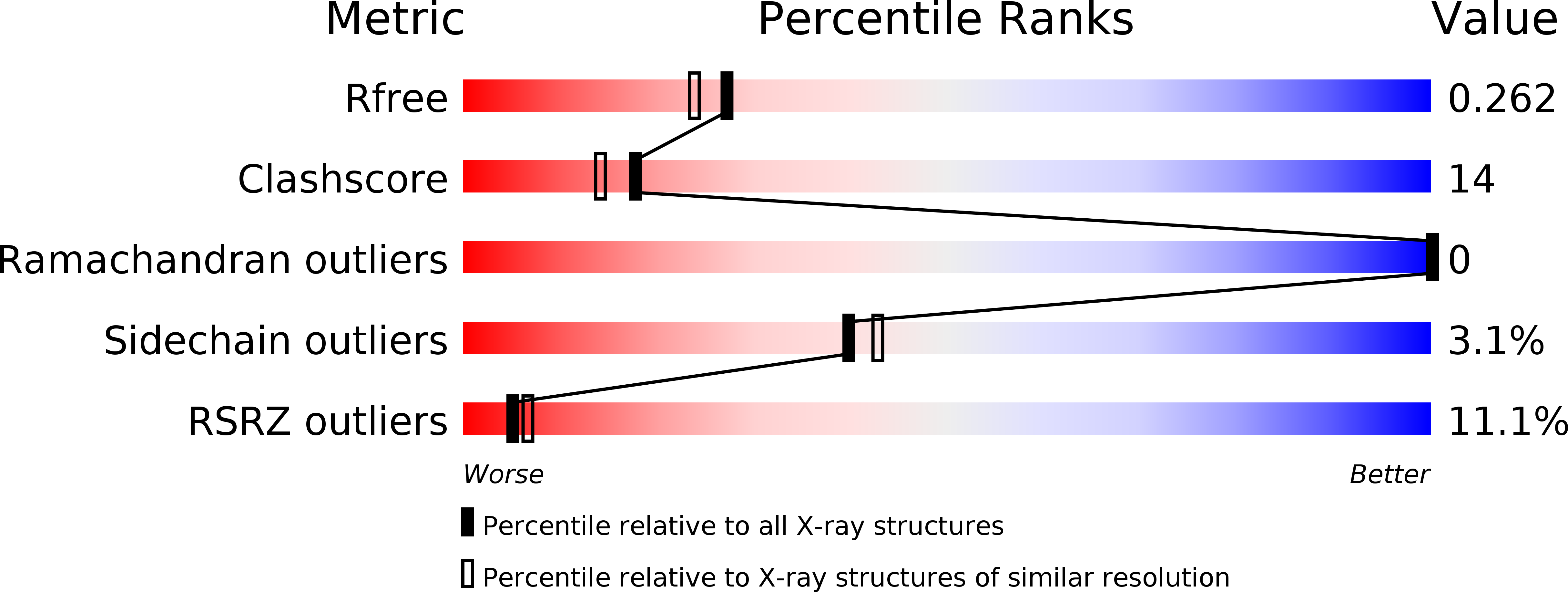
Deposition Date
2004-08-25
Release Date
2005-04-14
Last Version Date
2023-12-13
Entry Detail
PDB ID:
1W6Y
Keywords:
Title:
crystal structure of a mutant W92A in ketosteroid isomerase (KSI) from Pseudomonas putida biotype B
Biological Source:
Source Organism:
PSEUDOMONAS PUTIDA (Taxon ID: 303)
Host Organism:
Method Details:
Experimental Method:
Resolution:
2.10 Å
R-Value Free:
0.26
R-Value Work:
0.22
R-Value Observed:
0.22
Space Group:
C 2 2 21


